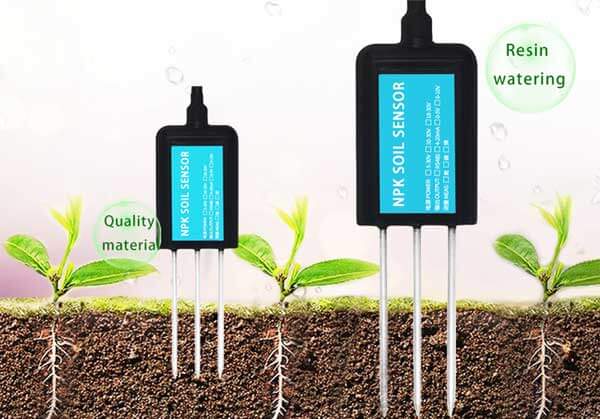Soil sensors are innovative devices that provide valuable information about the condition and health of soil. They have revolutionized agriculture, environmental monitoring, and research by enabling precise data collection and analysis. This article aims to explore the various applications and uses of soil sensors in different fields.

Agriculture:
Soil sensors have greatly impacted the agricultural industry by enabling farmers to make informed decisions regarding irrigation, fertilization, and crop management. Some common uses of soil sensors in agriculture include:
Irrigation Management:
Soil moisture sensors help farmers determine the optimal time for irrigation. By measuring the moisture content of the soil, these sensors provide real-time data about water availability, helping farmers save water and ensure efficient water use.
Nutrient Monitoring:
Soil sensors can measure the levels of essential nutrients such as nitrogen, phosphorus, and potassium in the soil. This information allows farmers to apply fertilizers precisely and avoid over or under-application, leading to improved nutrient management and reduced environmental impact.
pH Monitoring:
Soil pH is crucial for plant growth and nutrient availability. Soil sensors can measure the pH level of the soil, enabling farmers to adjust soil acidity or alkalinity accordingly, ensuring optimal conditions for crop growth.
Soil Temperature Monitoring:
Soil sensors equipped with temperature probes help farmers monitor soil temperature. This information aids in determining the best time for planting, optimizing germination rates, and managing seasonal changes.
Environmental Monitoring:
Soil sensors play a vital role in environmental monitoring and research. They provide valuable data for assessing soil health, studying ecosystems, and understanding the impact of human activities on the environment. Some applications of soil sensors in environmental monitoring include:
Soil Erosion Monitoring:
Soil sensors help scientists and researchers monitor soil erosion rates. By measuring factors such as soil moisture, compaction, and stability, they provide insights into erosion processes and help develop effective erosion control strategies.
Pollution Detection:
Soil sensors can detect the presence and concentration of pollutants in the soil, such as heavy metals or chemical contaminants. This information aids in identifying polluted areas, evaluating remediation efforts, and assessing the overall environmental health.
Ecological Research:
Soil sensors are used in ecological research to study soil biodiversity, nutrient cycling, and microbial activity. These sensors provide valuable data on factors such as organic matter content, soil respiration rates, and nutrient availability, contributing to a better understanding of ecosystems and their functioning.
Construction and Infrastructure:
Soil sensors have applications beyond agriculture and environmental monitoring. They are also used in construction and infrastructure projects to ensure stability, assess soil conditions, and prevent damage. Some uses of soil sensors in this field include:
Geotechnical Engineering:
Soil sensors help engineers assess soil properties, including compaction, moisture content, and shear strength. This information is crucial for designing foundations, roadways, and structures that can withstand different soil conditions.
Landslide and Slope Stability Monitoring:
Soil sensors are utilized to monitor soil movements, inclinations, and moisture levels in landslide-prone areas. This data enables early detection of potential landslides and aids in implementing preventive measures.
Building Foundation Monitoring:
Soil sensors can be installed near building foundations to monitor soil moisture and movement. This helps identify foundation settlement or heave, allowing for timely maintenance or repairs.

Conclusion:
Soil sensors have revolutionized various industries by providing valuable insights into soil conditions, enabling precise decision-making, and promoting sustainable practices. In agriculture, they optimize irrigation, nutrient management, and crop productivity. In environmental monitoring, they aid in studying ecosystems, pollution detection, and erosion control. Additionally, in construction and infrastructure, soil sensors contribute to stability assessment and preventive measures. With ongoing advancements in sensor technology, soil sensors continue to play an increasingly important role in improving efficiency, sustainability, and environmental stewardship across diverse fields.
